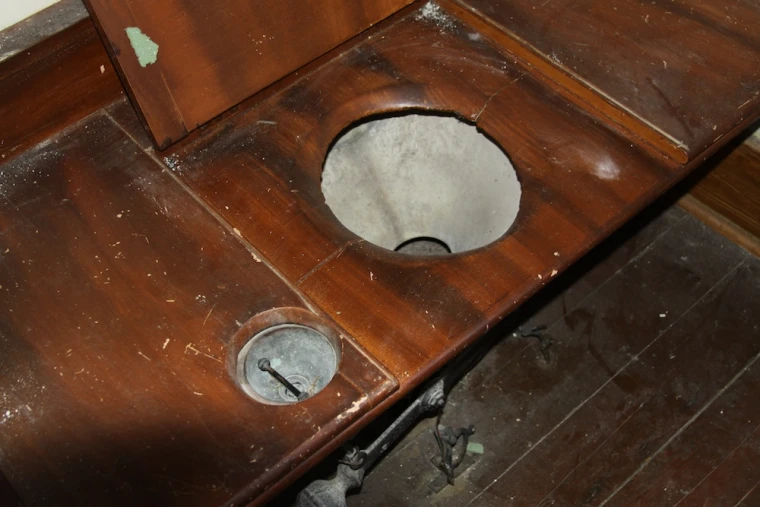Not many of us go into the washroom and wonder while we’re sitting on the toilet how the toilet works. We run on tap and clean water comes, we flush the toilet and waste disappears into a sewer system, while it seems so easy and approachable to us, it was once a rare thing. In ancient times there was no concept of flushing toilets or even using a toilet, people would put waste in running water that might be okay for a certain time but it caused many health risks later on.
When we hear the word plumbing, the concept of a plumber comes to mind who arrives at our home and repairs the pipes and that’s it. But have you ever wondered where it all started? How and when did the concept of indoor plumbing see the light of the day? Let’s get into the history of indoor plumbing.
The origination of indoor plumbing
While scribbling through history, we found out that the first time indoor plumbing was seen goes back to somewhere around 3000 to 4000 B.C. Archeologists discovered the underground pipes made of copper in the Indus Valley River in the subcontinent.
ROUND 2500 B.C. Egyptians set the base for indoor plumbing by inventing copper pipes that lead water into the pyramids. It was done in the honor of Nobel dead as they believe that the dead are worthy of enjoying luxuries in the afterlife.
In the reign of the Romans, plumbing took a massive turn because they constructed aqueducts for water supply to towns, and they constructed bathrooms as well.
Contribution of Minoan Civilization on Crete’s Island
Even before the Romans, there was a significant contribution by the Minion Civilization on Crete’s Island. In 2000 B.C. they invented clay pipes for indoor plumbing and water drainage systems. In the palaces, they created first-ever flushing toilets that laid the foundation for future inventions.
Flushing Toilet Invention
Sir John Harrington
The contribution of Minoans proved to be very fruitful for the invention of the first indoor flushing toilet. In the late 16th century, the first indoor flushing toilet was constructed in the love of grandmother. In 1596, Sir John Harrington created the flushing toilet for his lovely grandmother, Queen Elizabeth I, who used an advanced method of using water to flush waste. His invention although highly appreciated, wasn’t adopted by common men and stayed as a luxury only wealthy people could use.
Alexander Cummings
In 1775, Alexander Cumming who is famously known as a watchmaker, inventor of the first barograph, and inventor of the microtome. He was awarded the honor of patent to design the flushing toilets, he used an S-shaped pipe below the bowl that enhances the comfort and ease of use. His invention remained unrecognized for 75 years, it was in 1850 when toilets invented by Crapper found their way to glory and took center stage. Following the fandom, in 1870 he created his showroom for toilets where he would offer the plumbing services.
The Tremont Hotel
In 1829, a beautiful hotel was founded in Boston, named The Termont Hotel. This hotel changed the whole dynamics of indoor plumbing history. In the United States of America, it became the first ever hotel to have complete indoor plumbing even indoor toilets that had running water availability in them.
The innovators to achieve this milestone are Isaiah Rogers and Charles Bulfinch. They set the stage to create hotels that were more appealing and desirable for guests. This step leads to more and more progress in indoor plumbing.
Fast forward to 1855, in Chicago, a public water supply network came into existence that was based on the agenda of providing clean water to residents to improve public health.
Pre-Modern Era Advancements in Indoor Plumbing
The late 18th and early 19th century was the peak rise of indoor plumbing, many new advancements were made that paved the way to modern indoor plumbing as we see it today. In 1907, Thomas Carper invented the siphonic flush system, he earned nine patents for plumbing innovations. His innovations and mechanisms are still in use today. He introduced several new mechanisms like flushing water closets or toilet fill valves.
First Mechanical Shower:
Even though flushing toilets is considered to be the star discovery of indoor plumbing, it wasn’t the only discovery that shaped modern indoor plumbing.
William Feethem was the inventor of the mechanical shower, his simple yet innovative shower consisted of a handle that could deliver steam and water with just one turn. His invention made today’s shower system foundation.
The mechanical shower he made was a game changer for bathing techniques, it made relaxing showers a thing because of the convenience and ease of use it provides.
Plumbing in Today’s World
These innovations were the reason indoor plumbing became accessible to every household and every common person. Indoor plumbing as we see in today’s world is all about human convenience and the utilization of smart technology. Japan created the first-ever smart flushing toilet that can flush water at different angles and different temperatures with just a push of a button. Plumbing got advanced in the late 90s and early 2000s. In 2003, the first international standards for plumbing were set. Similarly, to protect water wastage, California created and followed a tough water standard law that states that no toilet can flush more than 1.28 gallons of water at one time.
Conclusion:
The history of plumbing is proof that humans have come a long way through their inventions and innovations. While the concept remains the same, the efficiency improved with the new times. The basic principles and concept in which plumbing originated are still intact, however, with new technology and advancement, plumbing in today’s world is far more reliable and smart. Now water is more accessible to each person, with just a button you can set the temperature of water. Geysers and boilers have cast aside the need of stove heating water and that’s why showers have now become a fun thing.


